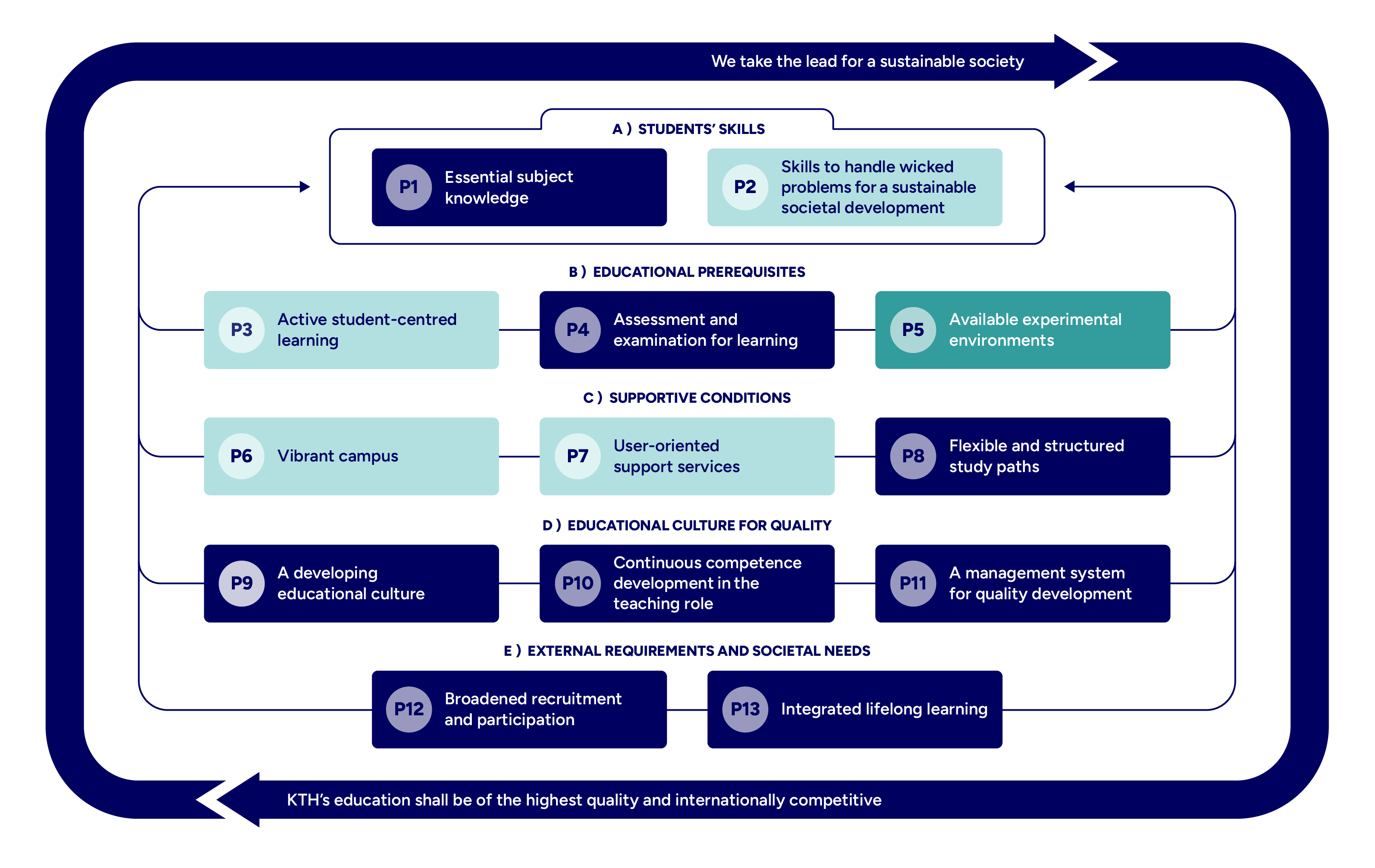Strategic direction for experimental environments (makerspaces) at KTH
The project involves proposing a strategic direction for how KTH's experimental environments can be used more as makerspaces; they become more open, accessible and promote challenge-driven education, interdisciplinarity, innovation, entrepreneurship, creativity and design thinking.

Project context
Being an engineer means being able to do something – not just (theoretically) knowing about something. KTH's focus on application has always been high. However, given the societal challenges we face, it is not enough to be able to do (or even "do it right"). Today, we often have no given correct answers – the importance of challenge-driven education (CDE) that includes wicked problems is high and constantly increasing. Based on the number of projects within the Future Education programme that touch on CDE, there is a broad awareness of this at KTH's schools.
KTH has many physical, digital and mixed experimental environments; anything from small spaces dedicated to research, via more traditional lab environments, to large creative experimental hubs. However, many primarily support education within specific courses or programmes. Overall, these environments represent a large investment, but they are often neither known nor accessible to anyone other than the students in these courses and programmes. If these environments could be made visible and opened up to more students, the effectiveness of investments already made will increase.
The Makers’ Movement is a global movement that takes the idea of application and CDE much further, and where experimental environments are developed into so-called makerspaces. Makerspaces encourage people to create, build and experiment with technology, electronics, mechanics, programming, design and much more. When this is linked to engineering education, learning can not only be made more practical and CDE-oriented, but it can be taken to the next level. Innovation and entrepreneurship are promoted, as well as creativity and design thinking. Students are trained in the entire engineering process (e.g. in line with CDIO) from concept development to design, implementation and evaluation, which requires interdisciplinary collaborations.
Today, there are many international examples of leading maker environments. UC Berkeley – Jacobs Hall, EPFL – SPOT (Student Prototyping and Outreach Tank), MIT – The Deep & Metropolis, which is part of MIT's Project Manus, DTU Skylab, and more.
Purpose (outcome)
The project aims to define a strategic direction and a decision base for KTH's future management of our experimental environments so that they:
- become more open; the environments are made available to more users, opening hours are increased, etc. In addition to the thereby increased direct benefit of the environments in education, the efficiency of investments already made is increased;
- are used more as makerspaces, for both courses and outside curricula activities, to promote challenge-driven teaching, innovation, entrepreneurship, creativity, design thinking and interdisciplinary collaboration.
Project results (output)
- Inventory of existing experimental environments at KTH (per school), their functions, accessibility, capacity, etc. (with and without additional investments);
- Proposal for strategic direction for the future management of experimental environments (makerspaces) at KTH in the form of a presentation, anchored with all schools and other relevant stakeholders;
- (if the project is successful:) Decision basis (with management of the decision process) for the President's decision on future implementation.
Time plan
Start date: 2024-12-01
End date: 2025-06-30
Project documentation
If you have a KTH ID, you can read the latest project documents on OneDrive when logged in:
- Project initiation document: Projektdirektiv_FrU24_2408-KTH_Strat-Inriktning-Makermiljöer.pdf (Swedish)
Results
- Inventory: Resultat_2408-KTH-Inventering.pdf (Swedish)
- Proposal for strategic direction: esultat_2408-KTH-Strategisk-Inriktning.pdf (Swedish)
- Decision: Resultat_2408-KTH-Beslut (hs-2025-1960).pdf (Swedish)
